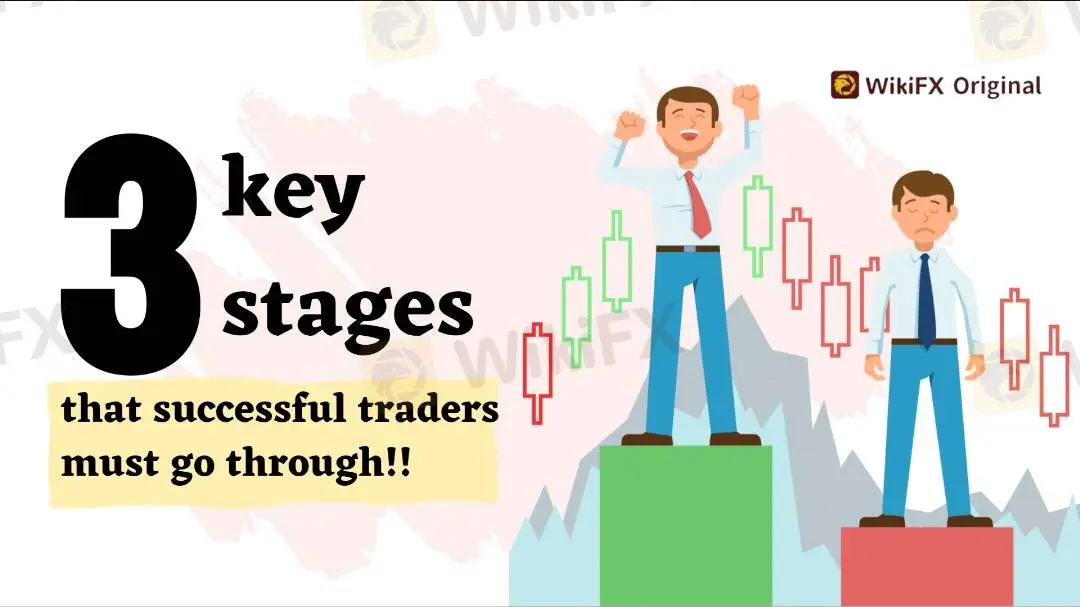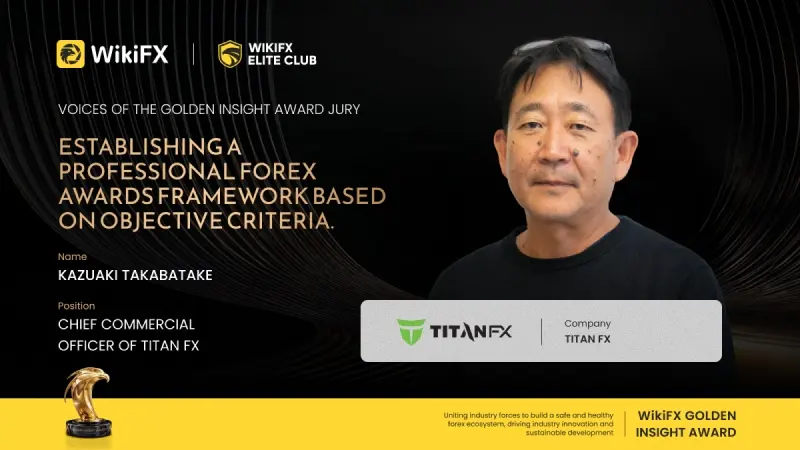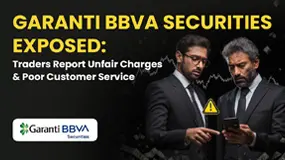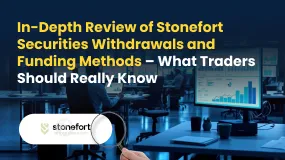简体中文
繁體中文
English
Pусский
日本語
ภาษาไทย
Tiếng Việt
Bahasa Indonesia
Español
हिन्दी
Filippiiniläinen
Français
Deutsch
Português
Türkçe
한국어
العربية
3 key stages that successful traders must go through.
Abstract:The 3 key stages that traders must go through for growth are the "greed-driven" stage, the "fear-driven" stage, and the "risk-driven" stage. However, it is important not to take these labels literally but rather see them as an attempt to summarize the aforementioned three critical stages.

The 3 key stages that traders must go through for growth are the “greed-driven” stage, the “fear-driven” stage, and the “risk-driven” stage. However, it is important not to take these labels literally but rather see them as an attempt to summarize the aforementioned three critical stages.
Greed-Driven Stage
The primary characteristics of the first stage are ignorance and the belief that the market is an “easy money” place. The driving emotion for novice traders may not necessarily be greed but rather other emotions. A successful trader or professional might be seeking new challenges, while many individuals may be experiencing dissatisfaction with their current lifestyle and seeking excitement. Additionally, there are those who have a predisposition for gambling. For a novice trader, the first question to address is their true motivation for trading. Most of the things people do are driven by emotions, such as deciding which car to buy or what kind of vacation to take. Reflecting on why one bought their current car or chose to marry (or not marry) a particular person will provide insights. Therefore, it is not surprising that we continue to make emotional decisions even after entering the market. However, these emotional decisions do not work in the market, as the market itself is like an emotional creature. When the market sentiment is screaming “sell,” successful traders are likely to be buying.
Let us contemplate the traders who attempt to alleviate their boredom and dissatisfaction through market trading. It is clear that they experience the strongest urge to trade when they feel the most bored and dissatisfied. There is no evidence to prove that these emotional moments coincide with favorable trading opportunities. Additionally, some traders suffer from issues related to self-esteem, which, in my opinion, is a pain that all of us endure to some extent. If this is indeed the case, engaging in an argument with another person may prompt a trader to establish a position in order to restore their diminished self-esteem.
To achieve success, traders must address all of the aforementioned issues. From my perspective, the only way for traders to “see” themselves clearly is by using a highly mechanized “system” that dictates what they should do. In this way, traders can recognize when their actions are not aligned with their trading system and begin to question why they should behave differently. Through this process, we gain an understanding of ourselves. I believe this is a critical prerequisite for achieving trading success.
Due to these and other challenges, novice traders often suffer significant financial losses, leading to internal pain. Many individuals (possibly the majority) end up losing all their money. The crucial point is that they become cautious and fearful as a result. Simultaneously, they begin to realize the first trading secret: implementing stop-loss orders. The emergence of this concept signifies the transition from greed-driven to fear-driven stage. In fact, executing stop-loss orders can be viewed as a response to fear.
Fear-Driven Stage
During this stage, traders start using stop-loss orders, but these are often set too tight. Traders have realized that trading is not an easy endeavor and requires a great deal of effort. Many individuals become discouraged and drop out at this stage, while those who persevere demonstrate the necessary commitment and dedication to succeed. However, the greater challenges lie ahead, as mere commitment is often insufficient.
For higher beings like humans, fear-driven behavior is an inevitable natural instinct. The market itself is neither scary nor terrible and is not difficult to understand or navigate. The market is simply what it is, and it operates on its own accord. The problem arises from our perception of the market and the way we react based on that perception. We must recognize that we alone are responsible for our trading outcomes and should not rely on the market itself to be accountable for us. Only when we take responsibility do we begin to achieve positive results. If we believe that our losses are caused by others, we are essentially admitting that we have no control over our trades. If we cannot control our trades, how can we expect to achieve success?
Because we need to address numerous issues, the fear-driven stage may persist for a considerable period of time. Fear is of no use in the market, as those who fear losing money will never make money. We often execute stop-loss orders and take profit prematurely, leading to overly anxious and hasty actions in our trading.
Risk-Driven Stage
To become a risk-driven trader, we must make progress in all aspects mentioned earlier. This includes gaining a deeper understanding of ourselves, making necessary changes, developing a better understanding of the trading process, adjusting our trading methodology to suit our needs, and learning to trade with a relaxed mindset. These are essential prerequisites. Most individuals should immediately reduce their trading size by at least half, as it brings peace of mind and a sense of ease.
The stage is called risk-driven because to profit, you need to understand risk. Trading is a venture that involves risk, and when you become a risk-driven trader, you align yourself with the essence of the market.
In this stage, a key trading principle is to let profits run. At this point, you may start achieving consistent and sustained profits in the market. However, before reaching this stage, your trading volume should never exceed the minimum trading unit, which is typically one lot (in the case of futures). Why unnecessarily pay more tuition fees?
Once you become a risk-driven trader, you will learn the final trading secret: selective trade opportunities. Once you master this skill, trading will no longer easily excite you. I have already achieved consistent and sustained profitability, but I still find myself occasionally trading too frequently. To master the art of selecting trade opportunities, you must become an expert in your chosen methodology. The key in your methodology is to filter through a large volume of market information and focus only on the factors that are essential for you to know.
Becoming an expert in a narrow field is much easier than becoming an expert in a broad field. There are so many sources of market information that it is impossible to gather them all, let alone become an expert in processing all of that information. You need to decide which information is necessary and design your own approach to apply in your trading. Once you become an expert, you will find yourself becoming an intuitive trader. At that moment, you will be able to select the best trading positions and low-risk trade opportunities. From there, everything will fall into place.

Before engaging in trading, it is essential to search for the broker's rating on WikiFX to make an initial assessment of whether it is a fraudulent platform. Looking to invest in US stocks, forex, or futures, but worried about being scammed? The most comprehensive information on brokerage firms is available here. Before depositing funds, make sure to download the Financial Market Anti-Fraud 165: WikiFX app to protect your capital.

Disclaimer:
The views in this article only represent the author's personal views, and do not constitute investment advice on this platform. This platform does not guarantee the accuracy, completeness and timeliness of the information in the article, and will not be liable for any loss caused by the use of or reliance on the information in the article.
Read more

Voices of the Golden Insight Award Jury | Kazuaki Takabatake, CCO of Titan FX
WikiFX Golden Insight Award uniting industry forces to build a safe and healthy forex ecosystem, driving industry innovation and sustainable development, launches a new feature series — “Voices of the Golden Insight Awards Jury.” Through in-depth conversations with distinguished judges, this series explores the evolving landscape of the forex industry and the shared mission to promote innovation, ethics, and sustainability.

Garanti BBVA Securities Exposed: Traders Report Unfair Charges & Poor Customer Service
Have you been financially ruined through chargebacks allowed by Garanti BBVA Securities? Do you have to wait for hours to get your queries resolved by the broker’s customer support official? Did the same scenario prevail when you contact the officials in-person? Failed to close your account as Garanti BBVA Securities officials remained unresponsive to your calls? Many have expressed similar concerns while sharing the Garanti BBVA Securities review online. In this article, we have shared some complaints against the broker. Take a look!

In-Depth Review of Stonefort Securities Withdrawals and Funding Methods – What Traders Should Really
For any experienced forex and CFD trader, the mechanics of moving capital are as critical as the trading strategy itself. The efficiency, security, and transparency of a broker's funding procedures form the bedrock of a trustworthy, long-term trading relationship. A broker can offer the tightest spreads and the most advanced platform, but if depositing funds is cumbersome or withdrawing profits is a battle, all other advantages become moot. This review provides a data-driven examination of Stonefort Securities withdrawals and funding methods. We will dissect the available information on payment options, processing times, associated costs, and the real-world user experience. Our analysis is anchored primarily in data from the global broker regulatory inquiry platform, WikiFX, supplemented by a critical look at publicly available information to provide a comprehensive and unbiased perspective for traders evaluating this broker.

MH Markets Deposits and Withdrawals Overview: A Data-Driven Analysis for Traders
For any experienced trader, the integrity of a broker is not just measured by its spreads or platform stability, but by the efficiency and reliability of its financial plumbing. The ability to deposit and, more importantly, withdraw capital without friction is a cornerstone of trust. This review provides an in-depth, data-driven analysis of the MH Markets deposits and withdrawals overview, examining the entire fund management lifecycle—from funding methods and processing speeds to fees and potential obstacles. MH Markets, operating for 5-10 years under the name Mohicans Markets (Ltd), has established a global footprint. With a WikiFX score of 7.08/10, it positions itself as a multi-asset broker offering a range of account types and access to the popular MetaTrader platforms. However, for a discerning trader, the real test lies in the details of its payment systems and the security of their funds. This article dissects the MH Markets funding methods withdrawal experience, leveraging pr
WikiFX Broker
Latest News
The 350 Per Cent Promise That Cost Her RM604,000
In-Depth Uniglobe Markets Commission Fees and Spreads Analysis – What Traders Should Really Know
WikiFX's New Evaluation of ATM Capital LTD: Does its License Protect the Arab Investor?
Is Axi Legit? A Data-Driven Analysis of Its Regulatory Standing and Trader Feedback
How a Fake Moomoo Ad Led to the “New Dream Voyage 5” Scam
FXPesa Review: Are Traders Facing High Slippage, Fund Losses & Withdrawal Denials?
Trive Investigation: High Score, Hidden Risk - The Profit Paradox
CMC Markets Australia Revenue Surges 34%, But High-Net-Worth Clients Face Tax Phishing Threat
"Just 9 More Lots": Inside the Endless Withdrawal Loop at Grand Capital
GCash Rolls Out Virtual US Account to Cut Forex Fees for Filipinos
Currency Calculator



